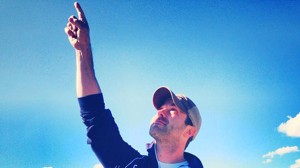1. The Science of Identity and Difference
Why are identical twins alike? In the late nineteen-seventies, a team of scientists in Minnesota set out to determine how much these similarities arose from genes, rather than environments—from “nature,†rather than “nurture.†Scouring thousands of adoption records and news clips, the researchers gleaned a rare cohort of fifty-six identical twins who had been separated at birth. Reared in different families and different cities, often in vastly dissimilar circumstances, these twins shared only their genomes. Yet on tests designed to measure personality, attitudes, temperaments, and anxieties, they converged astonishingly. Social and political attitudes were powerfully correlated: liberals clustered with liberals, and orthodoxy was twinned with orthodoxy. The same went for religiosity (or its absence), even for the ability to be transported by an aesthetic experience. Two brothers, separated by geographic and economic continents, might be brought to tears by the same Chopin nocturne, as if responding to some subtle, common chord struck by their genomes.
One pair of twins both suffered crippling migraines, owned dogs that they had named Toy, married women named Linda, and had sons named James Allan (although one spelled the middle name with a single “lâ€). Another pair—one brought up Jewish, in Trinidad, and the other Catholic, in Nazi Germany, where he joined the Hitler Youth—wore blue shirts with epaulets and four pockets, and shared peculiar obsessive behaviors, such as flushing the toilet before using it. Both had invented fake sneezes to diffuse tense moments. Two sisters—separated long before the development of language—had invented the same word to describe the way they scrunched up their noses: “squidging.†Another pair confessed that they had been haunted by nightmares of being suffocated by various metallic objects—doorknobs, fishhooks, and the like.
The Minnesota twin study raised questions about the depth and pervasiveness of qualities specified by genes: Where in the genome, exactly, might one find the locus of recurrent nightmares or of fake sneezes? Yet it provoked an equally puzzling converse question: Why are identical twins different? Because, you might answer, fate impinges differently on their bodies. One twin falls down the crumbling stairs of her Calcutta house and breaks her ankle; the other scalds her thigh on a tipped cup of coffee in a European station. Each acquires the wounds, calluses, and memories of chance and fate. But how are these changes recorded, so that they persist over the years? We know that the genome can manufacture identity; the trickier question is how it gives rise to difference…
2. Is Swearing a Sign of a Limited Vocabulary? | Scientific American
When words fail us, we curse. At least this is what the “poverty-of-vocabulary†(POV) hypothesis would have us believe. On this account, swearing is the “sign of a weak vocabularyâ€, a result of a lack of education, laziness or impulsiveness. In line with this idea, we tend to judge vulgarians quite harshly, rating them as lower on socio-intellectual status, less effective at their jobs and less friendly.
But this view of the crass does not square with recent research in linguistics. For example, the POV hypothesis would predict that when people struggle to come up with the right words, they are more likely to spew swears left and right. But research shows that people tend to fill the awkward gaps in their language with “ers†and “ums†not “sh*ts†and “godd*mnits.†This research has led to a competing explanation for swearing: fluency with taboo words might be a sign of general verbal fluency. Those who are exceptionally vulgar might also be exceptionally eloquent and intelligent.  Indeed, taboo words hold a particular purpose in our lexicon that other words cannot as effectively accomplish: to deliver intense, succinct and directed emotional expression. So, those who swear frequently might just be more sophisticated in the linguistic resources they can draw from in order to make their point.
New research by cognitive scientists at Marist College and the Massachusetts College of Liberal Arts attempts to test this possibility, and further debunk the POV hypothesis, by measuring how taboo word fluency relates to general verbal fluency. The POV hypothesis suggests that there should be a negative correlation: the more you swear, the lower your verbal prowess. But the researchers hypothesized just the opposite: the more you swear the more comprehensive your vocabulary would be.
“The ability to learn faster than your competitors may be the only sustainable competitive advantage.â€
I’m not talking about relaxed armchair or even structured classroom learning. I’m talking about resisting the bias against doing new things, scanning the horizon for growth opportunities, and pushing yourself to acquire radically different capabilities—while still performing your job. That requires a willingness to experiment and become a novice again and again: an extremely discomforting notion for most of us.
Over decades of coaching and consulting to thousands of executives in a variety of industries, however, my colleagues and I have come across people who succeed at this kind of learning. We’ve identified four attributes they have in spades: aspiration, self-awareness, curiosity, and vulnerability. They truly want to understand and master new skills; they see themselves very clearly; they constantly think of and ask good questions; and they tolerate their own mistakes as they move up the learning curve.
Of course, these things come more naturally to some people than to others. But, drawing on research in psychology and management as well as our work with clients, we have identified some fairly simple mental tools anyone can develop to boost all four attributes—even those that are often considered fixed (aspiration, curiosity, and vulnerability).
4. The Importance of Being Dirty: Lessons from Mike Rowe
**If you didn’t already adore Mike Rowe this conversation will make you. Amazingly interesting guy on top of everything you thought you knew. Also, The Tim Ferriss Show is hands down one of my favorite podcasts. Light in tone but deep in intellectual curiosity about an immense variety of topics.
—-
“Just because you love something doesn’t mean you can’t suck at it.â€Â – Mike Rowe
Stream Here:Â http://traffic.libsyn.com/timferriss/Tim_Ferriss_Show_-_Mike_Rowe.mp3
Mike Rowe (@mikeroweworks) is perhaps the best storyteller and pitchman I’ve ever had on the show.
You might know Mike from his eight seasons of Dirty Jobs, but that’s just a tiny piece of the story.
His performing career began in 1984 when he faked his way into the Baltimore Opera to get his union card and meet girls, both of which he accomplished during a performance of Rigoletto. His transition to television occurred in 1990 when — to settle a bet — he auditioned for the QVC Shopping Channel and was promptly hired after talking about a pencil for nearly eight minutes. There, he worked the graveyard shift for three years, until he was ultimately fired for making fun of products and belittling viewers.  Now, he is a massively successful TV host, writer, narrator, producer, actor, and spokesman.
Why listen to this episode? You will learn:
-
Secrets of the perfect pitch
-
How Mike flew around the world for free (until he got caught)
-
Why to pursue opportunity instead of passion
-
How being different can help you win in business and life
- The business of Mike Rowe
- Favorite books, voice-over artists, and much, much more…
If you’re in a rush and just want a fantastic 5-minute story about his selling pencils for the QVC audition, click here.
If you were forwarded this newsletter and enjoyed it, please subscribe here:Â https://tinyletter.com/peopleinpassing
I hope that you’ll read these articles if they catch your eye and that you’ll learn as much as I did. Please email me questions, feedback or raise issues for discussion. Better yet, if you know of something on a related topic, or of interest, please pass it along. And as always, if one of these links comes to mean something to you, recommend it to someone else.



